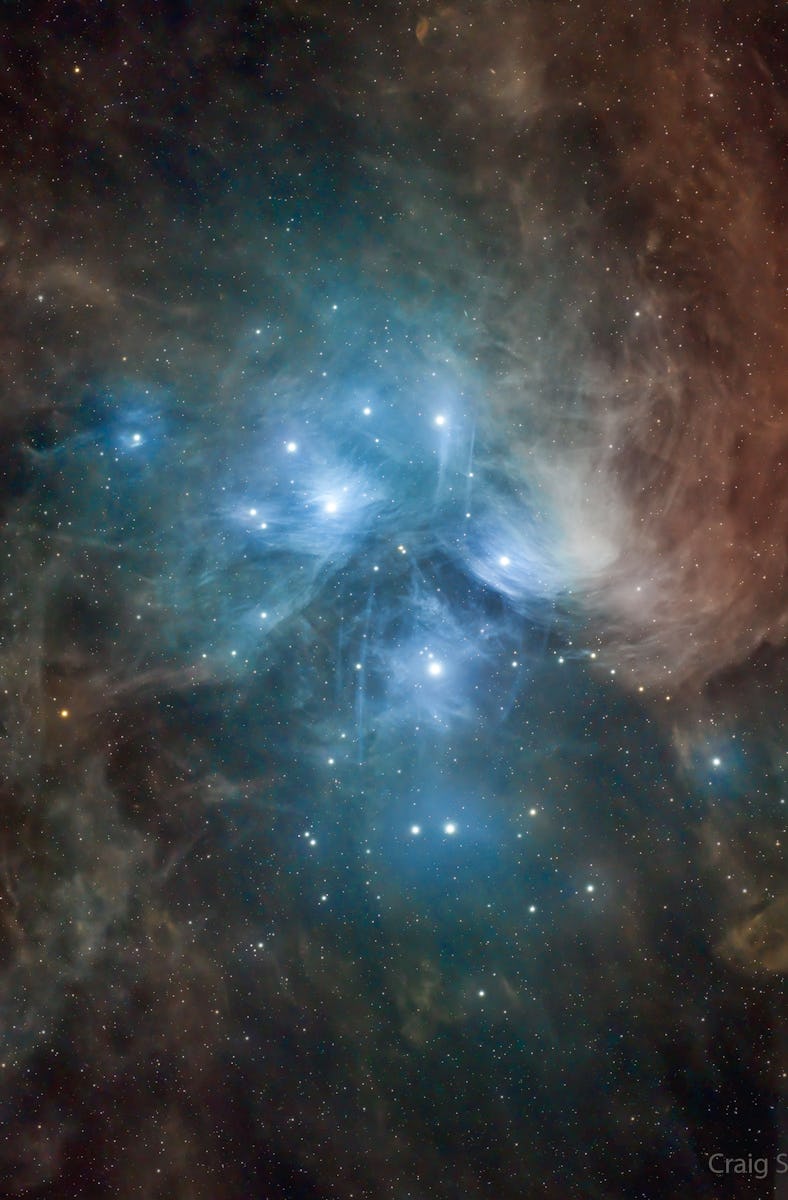Astronomers Captured A Star Cluster Ripping An Interstellar Dust Cloud To Shreds
You can see the constellation Pleiades with the unaided eye, but the tattered nebula only shows up with a sizeable telescope.

The Pleiades star cluster is slowly tearing a cloud of dust into cosmic tatters, and this new image from the Utah Desert Remote Observatory captured the beautiful destruction in action.
For roughly the last 100,000 years — a blink of an eye in cosmic time — a cloud of gas and dust has been passing through the open star cluster (a group of stars that formed from the same cloud of gas; they’re still linked by their mutual gravity) of the Pleiades, 444 light years away from Earth. The cloud is moving, or the stars are moving through it, at about 40,000 miles per hour. And the radiation from the massive, hot, bright blue stars of the Pleiades is ripping the passing cloud to shreds.
The blue glow in this image is starlight reflecting off gas and dust between the stars.
Massive blue stars like the ones in the Pleiades burn hot and bright, and the radiation they pour out into space can actually exert physical pressure on whatever is in their path. That powerful radiation is shoving dust from the passing cloud away from the stars, stretching the cloud into long filaments and making it glow with reflected blue starlight. The result is what astronomers call a reflection nebula (as opposed to a dark nebula, which just glows with its own faint infrared light).
The cloud of gas and dust the Pleiades are passing through may be part of a much, much larger structure called the Radcliffe Wave. This enormous scaffolding of gas and dust spans 8,800 light years along the same spiral arm of the Milky Way that contains our Solar System, and it links several patches of dense interstellar gas and dust where new stars are forming. Our own Sun may have formed in a dense, star-forming region of the Radcliffe Wave about 4.5 billion years ago.
This article was originally published on